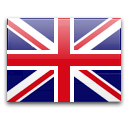Avoid lifting babies or children from under the arms; instead, place one hand beneath the bottom and another beneath the head/neck to lift. A pillow, egg-crate (foam) pad or sheepskin may be used beneath the baby to prevent friction against the skin while lifting and holding.
Since blisters can be caused by friction, the skin should be patted rather than rubbed. Before blood tests or immunizations, the area can be cleansed by gently pressing or patting the alcohol pad against the skin.
Clothing that rubs the skin may cause blisters. Avoid or alter clothing with binding elastic. Avoid harsh buttons, snaps and zippers. Non-binding diapers or cloth diapers may be used. Elastic may be cut from the legs of disposable diapers to help minimize blistering.
Tape or bandaids should not be applied to the skin because they may cause blistering.
Aquaphor or Vaseline will help decrease friction.
Gauze sponges, secured by rolled gauze, may be used to pad elbows, heels and knees if infant get blisters from kicking against the sheet in the crib. Soft socks may be placed over lubricated hands and feet to prevent blisters.

Hand washing is the most effective measure to control infection.
Gauze sponges, secured by rolled gauze, may be used to pad elbows, heels and knees if infant get blisters from kicking against the sheet in the crib. Soft socks may be placed over lubricated hands and feet to prevent blisters.
Skin may be cleaned with a very mild soap such as Dove.
Blisters tend to increase in size if they are allowed to remain intact. For this reason, most blisters should be drained when they are about the size of a dime or if they appear tense. Sterile needles or lancets may be used to puncture the side of the blister roof. A tiny pinhole may re-seal and allow the blister to refill, so take care to open the blister roof adequately. The blister roof should be left intact to facilitate healing and comfort. A mild antibiotic ointment may be applied to the area to aid in the prevention of infection.
Mild, over-the-counter antibiotics (Polysporin, Bacitracin) are effective in preventing infection and may be rotated every month or two to discourage bacterial resistance. Bactroban, like all antibiotics, should be used only when infection is present. (Signs of infection include increased redness, swelling, pain and warmth). Prolonged use of Bactroban has been associated with the development of resistant Staph infections.
Daily dressing changes are recommended and can be co-ordinated with a bath or cleansing of the skin. Some contact layer dressings, such as Mepitel (Mölnlycke Health Care) may be left in place for several days, although the secondary or outer dressing should be changed and the wound assessed daily.

While “breast is best” for most babies, breast feeding presents a special challenge for infants with EB. Infants with blisters and lesions in the mouth may have difficulty nursing or sucking from a regular baby bottle. Mothers may decide to provide expressed breast milk to their infants. The Haberman feeder is a cleft palate nipple which incorporates a valve that facilitates easy delivery of the formula without the need to suck hard. This works well for babies with a fragile oral mucosa.Infant mouth care may include gentle cleansing with a spongy toothette.A dry nipple will stick to lips and blistered areas, causing more damage. You may moisten the nipple with water or Vaseline prior to feeding.
It is important to chart the growth of an infant/child with EB. Such charts provide essential information for evaluating the adequacy of the diet. A nutritionist should be consulted about the nutritional status of an infant with EB if there are questions or concerns about weight gain. Many infants with EB require fortified formula to meet their increased caloric and protein needs.
It is not unusual for nursing staff and parents to avoid handling a baby with EB, with the hopes of minimizing blisters. Learning the correct way to hold the baby will instill confidence in the caregivers and allow the baby to receive the emotional support and closeness he/she needs. It’s a good idea to use the crib as a “Safe Place”. All dressing changes and other unpleasant activities should be performed at places other than the crib (for example, on the changing table). The infant should learn to connect the crib with comfort.




